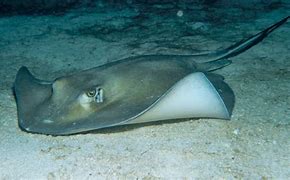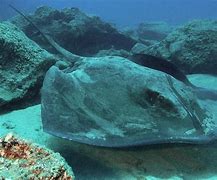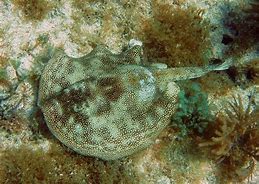Stingrays



Stingrays are a group of cartilaginous fish that belong to the family Dasyatidae. They are found in various marine habitats, including coastal waters, coral reefs, and sandy or muddy bottoms. Here are some interesting facts about stingrays:
Body Structure: Stingrays have a flattened body shape with pectoral fins that are expanded into broad, wing-like structures. This design allows them to glide through the water with ease. Most stingrays have a distinctive diamond-shaped body, although there can be variations in shape and size among different species.
Venomous Spines: One of the most notable features of stingrays is their venomous tail spine, also known as a stinger. The spine is located at the base of the tail and has sharp serrated edges. When threatened, a stingray can arch its tail, and the spine can be thrust into a potential predator or intruder, delivering a venomous sting. The venom is primarily used for defense and contains toxins that can cause pain, tissue damage, or other effects.
Diet and Feeding: Stingrays are carnivorous and have a diverse diet. They feed primarily on bottom-dwelling organisms such as crustaceans, mollusks, small fish, and worms. Stingrays have a specialized mouth on the underside of their body, which they use to crush and grind their prey. They have strong teeth adapted for their specific feeding habits.
Camouflage and Adaptations: Stingrays possess excellent camouflage abilities, which help them blend into their surroundings and avoid detection by predators or prey. Their coloration often matches the sandy or muddy substrate of the seafloor, allowing them to remain hidden. Some species even have patterns or spots that resemble rocks or other natural features.
Sensory Systems: Stingrays have a well-developed sensory system that helps them navigate their environment and locate prey. They have large, protruding eyes that provide good vision, particularly for detecting movement. Their sense of smell is also highly developed, allowing them to locate prey buried in the sand or hidden in crevices. Additionally, they have specialized sensory organs called ampullae of Lorenzini, which detect electrical impulses and help them locate hidden prey.
Reproduction: Stingrays have internal fertilization, and the male uses specialized reproductive organs called claspers to transfer sperm to the female. After mating, the female typically gives birth to live young, although some species may lay eggs. The gestation period can vary among species, ranging from several months to over a year.
Social Behavior: Stingrays are generally solitary animals, but some species may form small groups or aggregations. They may gather in certain areas for feeding or mating purposes. However, interactions between individuals are generally minimal, except during courtship or territorial disputes.
Conservation Status: Some stingray species are facing conservation challenges due to various factors, including habitat degradation, overfishing, and incidental capture in fishing gear. Certain species, such as the manta ray and the reef manta ray, are listed as vulnerable or endangered by the International Union for Conservation of Nature (IUCN). Conservation efforts aim to protect their habitats, regulate fishing practices, and raise awareness about the importance of their conservation.
Ecological Importance: Stingrays play a vital role in marine ecosystems. They help control populations of bottom-dwelling organisms, contribute to nutrient cycling, and serve as prey for larger predators. Their presence in coral reef ecosystems helps maintain the balance and health of these diverse habitats.